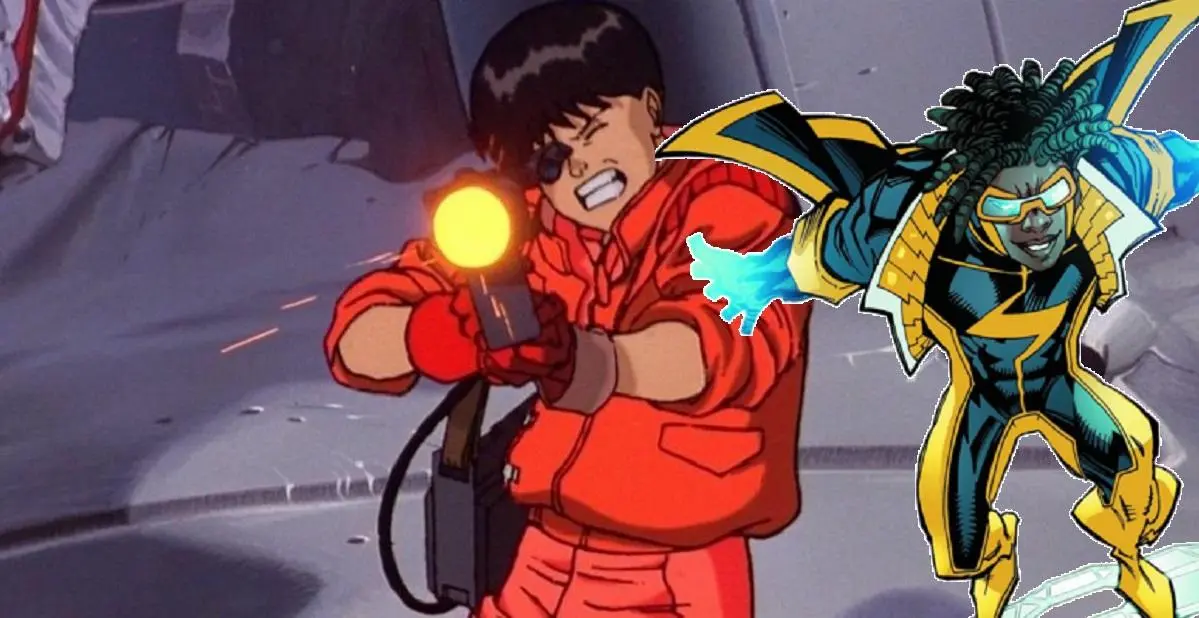
I used to think anime was mostly just over-the-top action with impossible physics. While I can appreciate Dragon Ball Z (and I don’t mean to offend any fans!), I didn’t really consider it to be a cinematic experience. Then I saw Akira, and my opinion changed.
Then came Akira – a movie that completely blew me away. It plunged me into a futuristic, gritty Tokyo and redefined what I believed was possible with animation and narrative. It’s a truly epic film, and all the hype is deserved.
Trying to get people into anime can be tough. Often, the word “anime” brings to mind things like Pokémon, or content that isn’t suitable for all ages. But the movie Akira is different. Released in 1988 and adapted from Katsuhiro Otomo’s manga, Akira is a groundbreaking cyberpunk film that shows what anime can really achieve. It’s famous for changing people’s minds – turning those who were unsure into dedicated fans, and even inspiring them to collect special edition copies. (Just look at my collection!) The reason? Akira is so powerful and well-made, it’s impossible to simply dismiss it as a cartoon; it deserves to be recognized as a serious work of art.
The Animation That Still Slaps

People often say older movies don’t hold up, but Akira proves them wrong. Even after over thirty years, the animation is stunning. Each movement looks carefully made, and that’s because it was – over 160,000 individual frames were hand-drawn! While most animated films back then used only 12 frames per second, Akira doubled that, using a smooth 24 frames per second.
A Story That’s Chaotic, Yet Strangely Relatable

The story of Akira can be a bit difficult to follow. When I first watched it, I was confused for most of the movie, thinking I’d somehow missed an earlier film in the series.
What makes Akira so brilliant is that it doesn’t feel the need to over-explain things. Many anime that came after it spent a lot of time detailing their worlds, but Akira‘s creators trusted viewers to understand the basics – Neo-Tokyo is constantly being rebuilt after a nuclear blast. The psychic characters speak in confusing ways, not because the writing is intentionally obscure, but because seeing the future likely makes normal conversation difficult. Even Akira himself isn’t on screen for very long, but his presence is felt throughout the entire story. This kind of confident approach to storytelling shows how often other media underestimates what audiences can figure out on their own.
That motorcycle scene in Akira—you really have to see it to understand—is a perfect example of visual storytelling. As Kaneda drifts his bike through Neo-Tokyo, the incredible music swells, and the scene instantly establishes the character, the world, and the overall mood, all without any dialogue. It’s a far cry from many modern anime, where characters often explain what’s happening during their fights. That’s why Akira still stands out – it trusts the power of animation to tell the story visually.
Here’s where Akira gets truly subversive

Unlike many anime, Akira doesn’t rely on typical anime tropes to appeal to fans. It came out before the widespread popularity of cute aesthetics and catering specifically to devoted anime enthusiasts, shaping how the world views the medium. While deeply rooted in Japanese culture – exploring themes of existential fear, a bleak corporate future, and the acceptance of societal breakdown – Akira‘s core messages are universally relatable. It’s an animated film that doesn’t need to change its style for Western viewers because its themes resonate with everyone.
It’s clear how much of an impact Akira has had on films like The Matrix and Stranger Things. However, its most important achievement is demonstrating that animated films could be the unique artistic expression of a single director, or ‘auteur’. Before Akira, Western animation was mostly considered just for kids or a small adult audience. Katsuhiro Otomo, the creator, proved that animation could be just as emotionally powerful as any movie with real actors.
Looking back, Akira feels surprisingly relevant. The film’s depiction of constant surveillance and growing social divides aren’t futuristic fantasies anymore – they’re issues we face today. Tetsuo’s disturbing physical transformation isn’t just shocking because of the animation itself, but because it speaks to a deep-seated fear of losing yourself and your sense of identity. The true mark of a great introductory anime isn’t whether it’s still good when you rewatch it as an adult, but whether it still feels powerful and even a little unsettling. Akira definitely delivers on that front. It’s still one of the few anime that feels truly groundbreaking and pushes boundaries, which is why it captivated me as a teen and continues to draw in new fans.
Okay, I get it, movies like Your Name might be more popular with some people right now. But for me, a true classic isn’t about being the biggest hit – it’s about impact! Seriously, if you haven’t experienced Akira yet, you NEED to. Seriously, get comfy, grab some snacks, and prepare to have your mind completely blown. Just a warning though: don’t say I didn’t warn you if you suddenly find yourself desperately searching for a Kaneda jacket online!
Read More
- Steam RPG From 2023 Being Removed Next Month and PC Users Aren’t Happy: “Huge Potential Wasted”
- Deadlock The Doorman Guide: Big Tips & Tricks
- Kunitsu-Gami: Path of the Goddess ‘Mazo Talisman: Yashichi Waves’ update launches in July
- Gears of War: Reloaded is Now Available
- Yakuza Maker’s Next PS5 Game Gets a Brief Behind-the-Scenes Video
- Alabaster Dawn Demo is Now Available on PC
- ‘My Name Is Jeff’: Channing Tatum Played Another Jeff In Roofman, And Is Considering Legally Changing His Name
- ‘LEGO Batman: Legacy of the Dark Knight’ Reveals Its 7 Main Batsuits
- Preview: Teamwork Is the True Terror of Little Nightmares 3
- No Upgrade Path for the Belated PS5 Version of Yakuza 0 Director’s Cut
2025-11-05 02:10